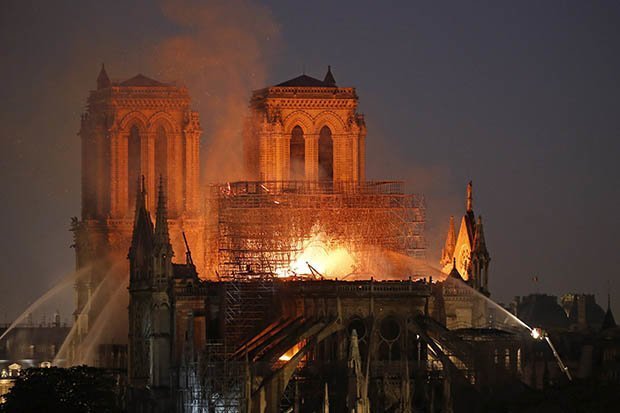The iconic Notre-Dame Cathedral going up in flames was a sight that elicited many emotions from the crowds looking on: horror, sadness, sheer stunned disbelief. Those emotions were also felt by many watching the images on news reports. There were moving scenes as people tried to comprehend how such a fundamental and much loved feature of their landscape, a building with such history that has stood for hundreds of years, could be devastated within such a short time.
The firefighters did a phenomenal job of managing to save so much of the cathedral and the many precious items of historic and religious significance contained within it. Alongside the discussion about rebuilding the Notre-Dame, the focus is now firmly on establishing the cause of the fire. It’s a question that’s unlikely to be answered quickly, yet almost straight away news reports were referring to possible connections with the major renovations that were underway.
Renovation and refurbishment: how do they increase the fire risks?
Historical buildings certainly present their own unique set of challenges when it comes to renovation. The materials used are often highly combustible. There is often limited fire compartmentation and there can be voids that no one is aware of that can make it very easy for fires to spread quickly. But while historical buildings are certainly complex, the fact is that any kind of renovation or refurbishment in any building of any age increases the fire hazards.
The obvious risk that might come immediately to mind is the one from any hot work activity which could result in sparks or flames. But there are many other factors to take into account, even if the refurbishment is a small scale one. For starters, renovations might jeopardise the established fire safety systems that are in place. Fire alarms might be disconnected for instance. If so, consideration should be given to putting temporary systems in place, ideally with remote monitoring by someone who can quickly access the property if the alarm is activated. Thought also needs to be given to other factors such as whether compartmentation might be breached or fire door effectiveness temporarily compromised. Will there be any restrictions to usual exit points and if so, does that mean people need to be made aware of alternative temporary escape routes?
It’s not just about changes to normal fire management systems and processes though. Routing of temporary power supplies for running equipment can present new hazards. Renovation work could introduce new risks like temporary lighting; some work lamps, like halogen lamps, generate substantial heat so ideally they should be avoided, particularly if the area they are being used in is poorly ventilated. If they can’t be avoided, don’t permit their use on a prolonged basis and make sure they are only stored away once they have been isolated from their power supply and have had the chance to cool down.
It’s also important to make sure all power tools are safe and have been PAT (portable appliance testing) tested. Contractors involved in the renovations should be able to provide documents to confirm this. Check tools regularly during renovations to make sure they have not developed any faults that could lead to them becoming fire hazards. There’s a risk that wiring to power tools, lighting and other equipment can become damaged from being stretched and pulled around during renovation works. Coiling can damage the core wiring too. So reinforce the need for safe practices such as regular cable checks, unplugging tools when not in use, safe storage and never leaving any equipment or battery packs charging unattended or when work is finished for the day. If the building is going to be left unoccupied at any point, switch off the electricity supply and, if possible, fully isolate it.
The devastation of the Notre-Dame cathedral was a high profile reminder of a simple fact that applies to every building: when fire breaks out, it respects nothing and destroys in minutes. If you feel you need some expert advice about managing fire risks at your premises, please get in touch with us.
One complete fire and security solution
Need a local team to help with fire safety and security?
